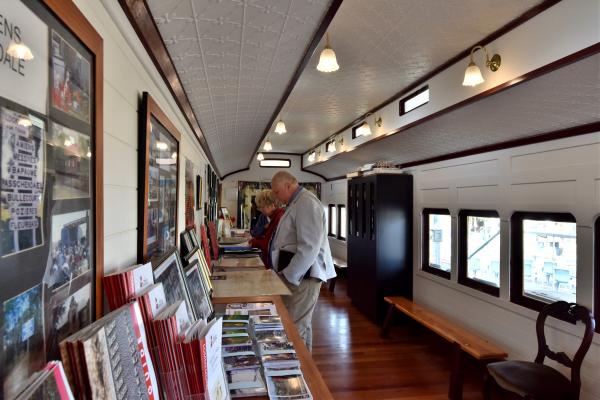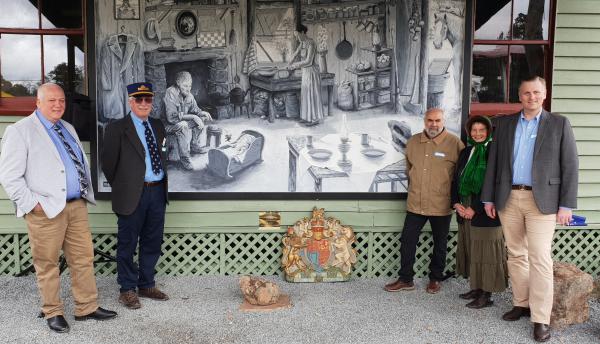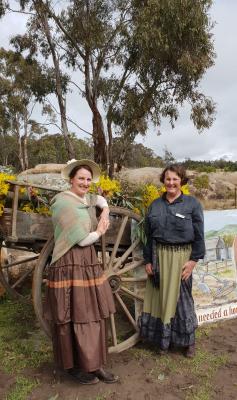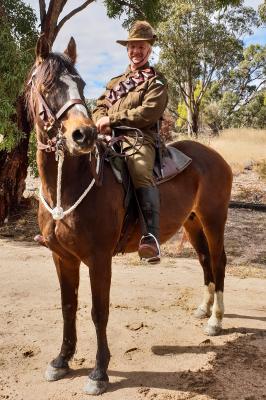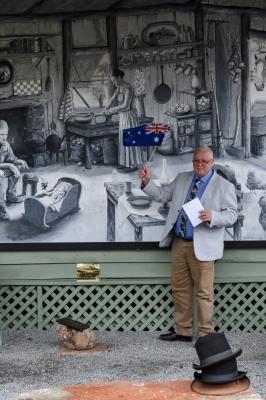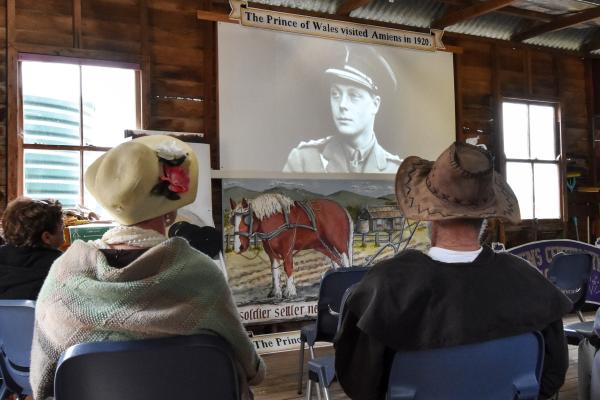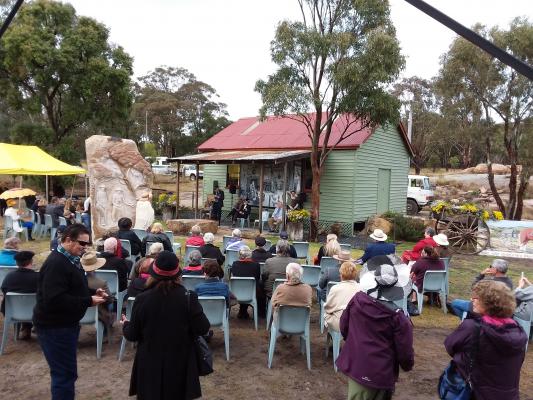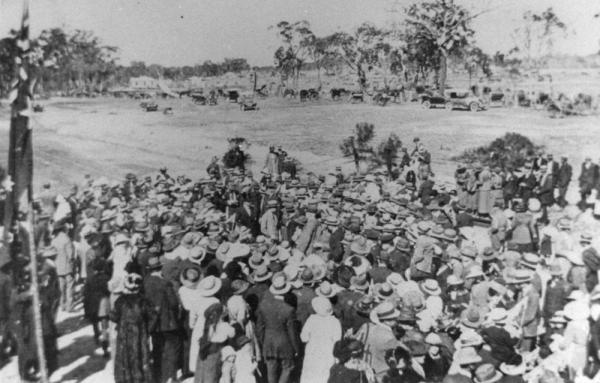(PRECEDE)
Free Times history contributor DEBORAH WHEELER and Stanthorpe region photographer SANDRA McEWAN were at the Amiens Legacy Centre on the last Sunday in July for the unveiling of a mural by Franco Arcidiacono…
By DEB WHEELER
Despite inclement weather on Sunday 26 July, the rain held off as just under 100 invited guests and members of the Amiens History Association gathered to commemorate two very important events in our local history.
Firstly, Sunday 26 July marked the one hundredth anniversary of the opening of the branch line from Cottonvale to Amiens by the Prince of Wales. This line allowed soldier settlers to have access to an easy form of transport in order to send their produce to the Brisbane markets.
Secondly, it also marked the official unveiling by Mayor Vic Pennisi of a significant art work at the Amiens Legacy Centre. ‘Forging A Future After The Trenches,’ is an original monochromatic painting by local artist Franco Arcidiacono. Franco has a long standing history with the Stanthorpe district predominately as a school teacher and now, in his retirement as an accomplished artist.
The mural draws the viewer’s eye and gives one a glimpse into the life of a soldier settler and his family. As with most Western literature, the story unfolds by following the painting from the left to the right. It depicts the ex-soldiers past, present and future and has been beautifully executed.
The Amiens Legacy Centre is open to the public on Sundays from 10am until 1pm.
XXXXXXXXXXXXXXX
(SUBHEAD)
A ROYAL VISIT…
The Armistice to end World War I had been signed in November 1918, and almost two years later His Royal Highness, Edward The Prince of Wales visited Australia.
He was representing his father George V and was touring the country to thank Australians for their participation in World War I. By all accounts his visit was very popular as evidenced by the following quote from an unofficial diary kept by his staff: ‘Confetti is appearing in great and unpleasant quantities, and the touching mania has started, only owing to the heartening disposition of the Australians the touches are more like blows and HRH arrived half blinded and black and blue’.
He visited all Australian states by rail and entered Queensland at Wallangarra. His itinerary was demanding and included visiting many smaller towns in addition to the capital cities. One such stop was the soldier settlement at Amiens. To make the journey, he transferred to a smaller train Cottonvale in order to traverse the Cottonvale to Amiens branch line. On the 26 July 1920 he arrived at Amiens and alighted from his carriage opposite the Amiens ticket office and waiting room. He was met by an enthusiastic group of soldier settlers and their families, as well as important officials. The Spanish flu had delayed his trip to Australia, but at Amiens he just had an ordinary cold, and so he said very few words during his sojourn.
Much was recorded in writing and images during the royal visit to Australia, but here we focus on his visit to Amiens.
In attendance was a reporter from the Courier Mail in Brisbane and Mr Henry Wilson, a local administrative official and amateur photographer. The reporter was the original “spin doctor” as his account of the visit is poetic.
He writes, “The wattles bloomed bravely, and cold clear streams ran through the hills. The mountain air was deliciously cool and invigorating. Every now and then a small clearing was revealed where stood some modest wayside house, or little group of houses, from which the settlers fluttered their little be-flagged welcomes. It spoke volumes.”
Wilson’s photography was much more down to earth. In the image reproduced here, the Prince is seen wearing a gray hat with dark band in the centre of the picture. The Shire Chairman is on his right in a top hat. A large crowd surrounds them. The village of Amiens is in the background with various forms of transport parked in front. An Australian flag flies on the far left. More of Wilson’s photos and details of this occasion can be found in the Commemorative Booklet “The Prince of Wales visits Amiens” obtainable at the Amiens Legacy Centre. They all show a crowd comprised of men in suits wearing hats similar to the prince that must have been very fashionable at the time, members of the military in uniform, and ladies wearing much more striking millinery than the men folk.
Wilson also records the gift of a koala to the Prince. It is unclear if the animal was live or stuffed, but if the former, it was probably released somewhere along the rail line out of Amiens and if the latter it may still be in the Prince of Wales’ vault in Clarence House.
(SUBHEAD)
GET IN TOUCH
• Anyone interested in sharing their stories of relatives connected with the First World War, particular those from the Southern Downs area are encouraged to contact me at read@deborahcwheeler.com

